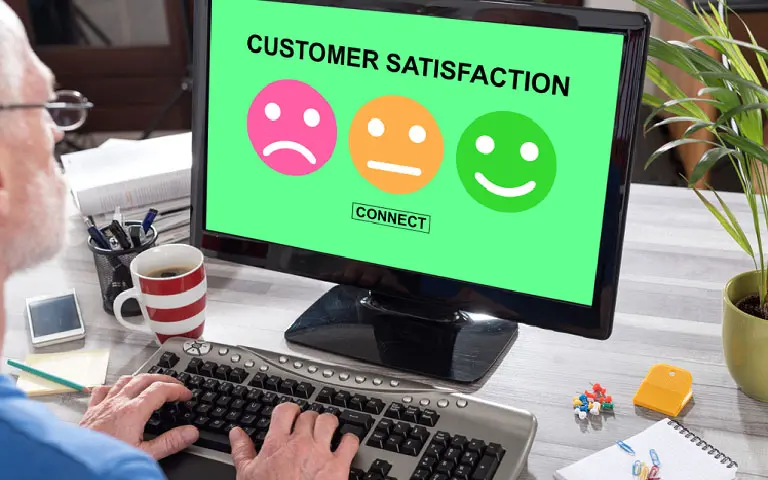Interactive voice response systems are big business. According to BusinessBlogsHub.com, the industry is set to top $5.5 billion by 2023. However, that doesn’t mean all IVR systems are created equally.
Call center satisfaction has been on the decline for years, and IVR systems are the primary culprit. Customers often complain about how phone self-service options mirror those that are offered online but which require two-way interaction before callers are able to speak to an agent. This situation is undoubtedly frustrating and unnecessary.
But, of course, it doesn’t have to be this way. Here’s a look at how investing in the right IVR system can boost your company’s satisfaction ratings.
The IVR Innovation Wheel
Choosing the right IVR for your business can create an uptick in customer satisfaction ratings via a 24/7, user-friendly cloud contact center. You can also personalize your IVR system by following these steps. This way, you’ll be able to provide a framework for personalizing your customers’ experience with your IVR.
1. Context
We’ll let you in on a little secret: Customers don’t like having to constantly input or provide personal information to IVRs and live agents, respectively. These days, however, modern IVR systems can be configured to require caller context and provide personalized options, enabling consumers to quickly resolve an issue.
More to the point, this way, your customers don’t have to repeat themselves to IVR systems or call center agents; instead, your customer service reps can resolve issues more quickly, and your customers will feel as though their concerns are actually being heard.
2. Intent
IVR systems are more than self-service resources, as they can also predict a caller’s intentions based on past purchases as well as the resolution of previous support-related issues. For instance, you may frequently have customers who call your support line after making a purchase to find out their shipping or order number.
Based on the algorithms that allow your live agents to quickly pull up customer information, they would already have this information at the ready every time your live agents receive similar support calls.
3. Adaption
Adaption is also important. Some callers are not comfortable using IVR systems, and it shows. They misunderstand the prompts, keep returning to earlier menus, or have to repeat prompts. Your IVR can be configured to recognize those individuals and connect them with a live agent sooner than customers who are clearly capable of using self-service solutions.
4. Proactive Outreach
Not all customer interactions via IVR have to be inbound. In fact, some systems can set reminders and provide proactive outreach as a way of further boosting customer satisfaction. To use our earlier example, you may opt to have your agents call that customer who regularly checks on the shipping status rather than wait to receive the call.
5. Visual IVR
Visual IVR can help extend your customer service by offering video as a communication channel. Also called graphical content routing, these systems can display the same prompts that the caller would have received over the phone. The visual nature of this solution is a good fit for those who are hearing impaired, as well as those who are phone-averse or expect to be able to resolve an issue through self-service.
6. Text IVR
Text IVR is another option consumers have with IVR technology. Simply put, this feature lets your customers submit questions via text message to your company and receive answers to simple queries. They may also be able to accomplish certain self-service activities without having to speak with a live rep or wait on hold.
7. In-Queue Self-Service
In-queue self-service is the final piece to the puzzle. With in-queue self-service, callers can work their way through prompts and get answers to simple questions. But, if they do need to speak with a live agent, they don’t have to go to the end of the line, thereby saving them time and frustration.
Conclusion
Modern IVR software can do more than route calls and provide support. When configured correctly, they can also provide greater context to live agents in order to resolve an issue or route the call to a more appropriate department.
Not only that, but this technology is also able to predict a caller’s intent, adapt to any caller’s needs, and trigger reminders to reach out proactively to consumers when it counts. IVR systems can also go beyond voice service to offer visual and text-based IVR. Finally, in-queue self-service ensures your callers don’t lose their spots by trying to DIY a solution.
Ultimately, customer satisfaction increases, because when consumers are able to speak with a live agent, these reps now have the context and predictive analysis necessary to deliver an excellent customer service experience during each and every interaction.













